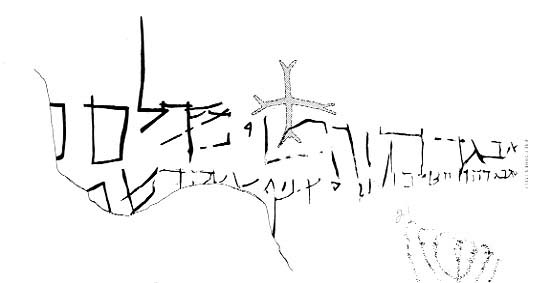Image Details

Erez Cohen
Two lines of letters in alphabetical order may be a magical formula for deliverance. Other symbols include a five-pointed star and a menorah.
The incantations apparently proved futile. Another message—the last one written, suggests author Patrich—tells posterity that the refugees have been captured and one of their number wounded or killed (see drawing). The inscription reads, “Yoezer was uprooted, the guards entered.” Because the style of the Hebrew script of this Aramaic inscription is characteristic of the end of the Second Temple period (c. 70 C.E.), we can assume that the guards who entered were Roman.
Centuries later, a Byzantine monk seeking to purify the site and to drive demons out of this desolate place drew a cross over this alphabetic inscription.
